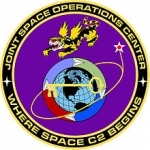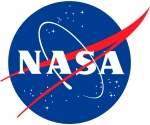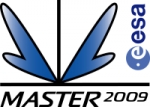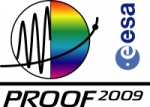Displaying items by tag: space debris
NASA Orbital Debris Program Office
The NASA Orbital Debris Program Office is located at the Johnson Space Center and is the lead NASA center for orbital debris research.
It is recognized world-wide for its leadership in addressing orbital debris issues. The NASA Orbital Debris Program Office has taken the international lead in conducting measurements of the environment and in developing the technical consensus for adopting mitigation measures to protect users of the orbital environment. Work at the center continues with developing an improved understanding of the orbital debris environment and measures that can be taken to control its growth.
SSA, Space Situational Awareness
The ESA SSA Programme aims, ultimately, to enable Europe to autonomously detect, predict and assess the risk to life and property due to man-made space debris objects, reentries, in-orbit explosions and release events, in-orbit collisions, disruption of missions and satellite-based service capabilities, potential impacts of Near-Earth Objects (NEOs), and the effects of space weather phenomena on space- and ground-based infrastructure.
The objective of the SSA programme is to support Europe's independent utilisation of, and access to, space through the provision of timely and accurate information and data regarding the space environment, and particularly regarding hazards to infrastructure in orbit and on the ground.
In general, these hazards stem from possible collisions between objects in orbit, harmful space weather and potential strikes by natural objects, such as asteroids, that cross Earth’s orbit.
ESA's SSA programme is focusing on three main areas:
- Space Weather (SWE): monitoring conditions at the Sun and in the solar wind, and in Earth's magnetosphere, ionosphere and thermosphere, that can affect spaceborne and ground-based infrastructure or endanger human life or health.
- Near-Earth Objects (NEO): detecting natural objects that can potentially impact Earth and cause damage
- Space Surveillance and Tracking (SST): watching for active and inactive satellites, discarded launch stages and fragmentation debris orbiting Earth.
Each of these activities is being developed as 'segment' (analogous to a satellite's traditional 'ground segment') in parallel sets of capabilities and services, supported by data centres and a Tasking Centre with contributions by existing European infrastructure.
Secure World Foundation
Secure World Foundation is an endowed, private operating foundation that promotes cooperative solutions for space sustainability and the peaceful uses of outer space.
The Foundation acts as a research body, convener and facilitator to promote key space security and other space related topics and to examine their influence on governance and international development.
Joint Space Operations Center (JSpOC)
Joint Space Operations Center (JSpOC) is a command and control (C2) weapon system focused on planning and executing US Strategic Command's Joint Functional Component Command for Space (JFCC SPACE) mission.
The purpose of the JSpOC is to provide a focal point for the operational employment of worldwide joint space forces, and enable the Commander of JFCC SPACE to integrate space power into global military operations. The JSpOC is located at Vandenberg Air Force Base in California. It is the organization responsible for performing all of the orbit determination activity necessary to maintain the US space catalogue.
In particular it keeps a real-time catalog of orbiting objects, including debris.
NASA Orbital Debris Program Office
The NASA Orbital Debris Program Office, located at the Johnson Space Center, is the lead NASA center for orbital debris research.
It is conducting measurements of the environment and in developing the technical consensus for adopting mitigation measures to protect users of the orbital environment. Work at the Center continues with developing an improved understanding of the orbital debris environment and measures that can be taken to control debris growth.
ESA Space Debris Office
The ESA Space Debris Office coordinates ESA's research activities in all major debris disciplines, including measurements, modelling, protection, and mitigation, and coordinates such activities with national research efforts with space agencies in Italy (ASI), the United Kingdom (BNSC), France (CNES) and Germany (DLR). Together with ESA, these national agencies form the European Network of Competences on Space Debris (SD NoC).
ESA's Space Debris Office has also been a forerunner in the definition of a European Space Surveillance System.
ESA's Space Debris Office provides operational services in support of planned and ongoing missions within ESA and to third parties.
ESA's Space Debris Office provides operational services in support of planned and ongoing missions within ESA and to third parties.
MASTER
MASTER (Meteoroid and Space Debris Terrestrial Environment Reference) is a software that can be used to analyze space debris flux and spatial densities. T
he following sources of debris are considered: launch and mission-related objects, explosion and collision fragments, solid rocket motor slag and dust, NaK droplets, surface degradation products, ejecta, and meteoroids. MASTER can deliver flux and spatial density analysis for all epochs between 1957 and 2060. For all epochs, the lower size threshold is one micron. The analysis of the future debris environment is possible based on three different future scenarios (business as usual, intermediate mitigation, full mitigation). The MASTER-2009 software is delivered on a DVD, together with extensive documentation of the underlying models. The software is available for Windows, Linux, Solaris, and MacOS X.
MASTER is developed and maintained by the ESA Space Debris Office.
PROOF
PROOF (Program for Radar and Observation Forecasting) is a software for the simulation of radar- and telescope-based space debris observations.
It is delivered together with the MASTER software. It can be applied for the validation of space debris models like MASTER against observation data. Another use is the planning of debris observation campaigns, including the derivation of neccessary sensor parameters.
PROOF-2009 has been applied in the course of the MASTER-2009 validation process to properly interpret debris observations performed by the ESA Space Debris Telescope, the Liquid Mirror Telescope, the Tracking and Imaging Radar, the Goldstone, and the Haystack Radar. With the new version of PROOF, a simulation of multistatic radar observations, and of phased array radars is now possible.
The software is available for Windows, Linux, Solaris, and MacOS X.
PROOF is developed and maintained by the ESA Space Debris Office.
PROOF
PROOF (Program for Radar and Observation Forecasting) is a software for the simulation of radar- and telescope-based space debris observations.
It is delivered together with the MASTER software. It can be applied for the validation of space debris models like MASTER against observation data. Another use is the planning of debris observation campaigns, including the derivation of neccessary sensor parameters.
PROOF-2009 has been applied in the course of the MASTER-2009 validation process to properly interpret debris observations performed by the ESA Space Debris Telescope, the Liquid Mirror Telescope, the Tracking and Imaging Radar, the Goldstone, and the Haystack Radar. With the new version of PROOF, a simulation of multistatic radar observations, and of phased array radars is now possible.
The software is available for Windows, Linux, Solaris, and MacOS X.
PROOF is developed and maintained by the ESA Space Debris Office.
MASTER
MASTER (Meteoroid and Space Debris Terrestrial Environment Reference) is a software that can be used to analyze space debris flux and spatial densities. T
he following sources of debris are considered: launch and mission-related objects, explosion and collision fragments, solid rocket motor slag and dust, NaK droplets, surface degradation products, ejecta, and meteoroids. MASTER can deliver flux and spatial density analysis for all epochs between 1957 and 2060. For all epochs, the lower size threshold is one micron. The analysis of the future debris environment is possible based on three different future scenarios (business as usual, intermediate mitigation, full mitigation). The MASTER-2009 software is delivered on a DVD, together with extensive documentation of the underlying models. The software is available for Windows, Linux, Solaris, and MacOS X.
MASTER is developed and maintained by the ESA Space Debris Office.










